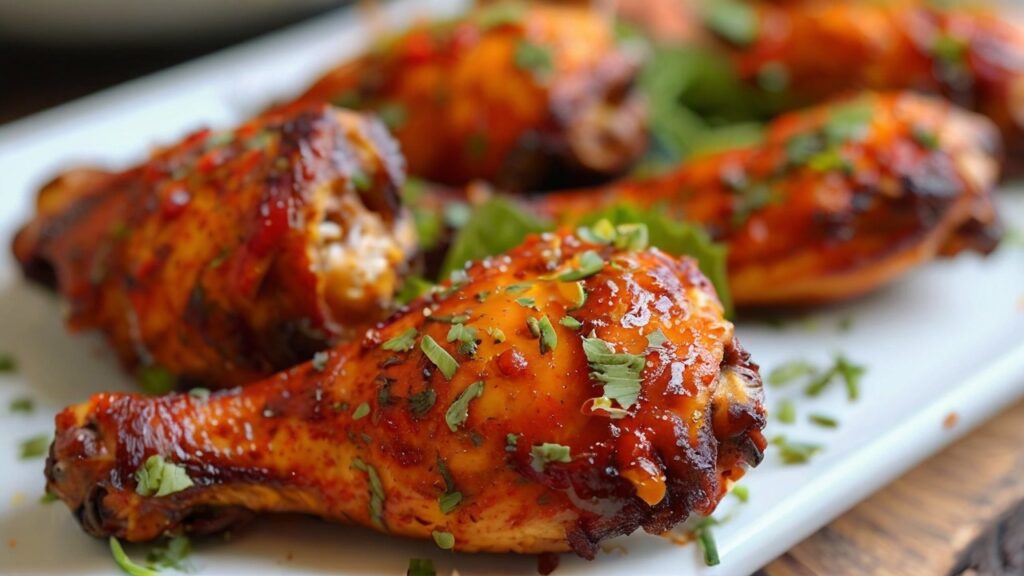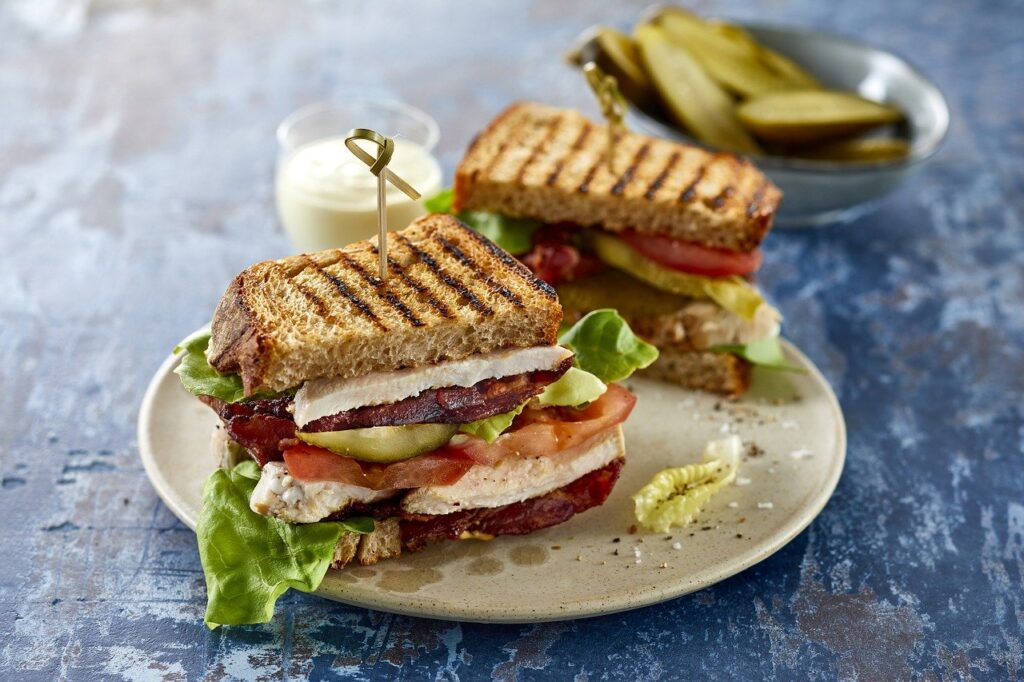We all know that life gets busy—between work, kids, and everything else pulling us in 10 directions, it’s hard to find time for a great meal. But I’ve got a little secret for you. You don’t need hours of hands-on time to make something mouth-wateringly delicious. Enter smoked buffalo chicken wings! They’re the perfect balance of smoky, spicy, and crispy. And here’s the best part—most of the work is hands-off, so you can enjoy a glass of wine, prep for your next Zoom call, or even spend some time with the kids while the smoker does all the hard work.
Let’s make these wings the highlight of your next family dinner, game day, or weekend gathering!
Why Smoke Your Wings?
Here’s the thing: frying is fun, and baking is easy, but smoking? Smoking gives your wings that deep, slow-cooked flavor that’s rich, complex, and just downright delicious. Plus, it’s super low-maintenance. Once you set everything up, the smoker does all the work while you handle life.
That means you can impress your family or friends with minimal effort. It’s like a little culinary magic trick—busy parents, professionals, and weekend grillers, this one’s for you!
Ingredients for Smoked Buffalo Wings
You don’t need a long list of fancy ingredients here, just the basics. The wings, of course, are the star. Then, a few key seasonings, and you’re good to go.
| Ingredient | Description |
|---|---|
| 1.Chicken Wings | About 2 pounds. Adjust based on how many people you’re serving. |
| 2.Olive Oil | Use this or any cooking oil you like. |
| 3.Salt & Pepper | Basic seasonings you probably already have in your pantry. |
| 4.Garlic Powder | Adds extra flavor. Use if you like a little kick. |
| 5.Buffalo Sauce | You can make your own or buy a good one from the store. |
| 6.Wood Chips | Applewood gives a sweet flavor. Hickory adds a stronger taste. |
That’s it! Simple and easy!
The Smoking Process: Step-by-Step Guide
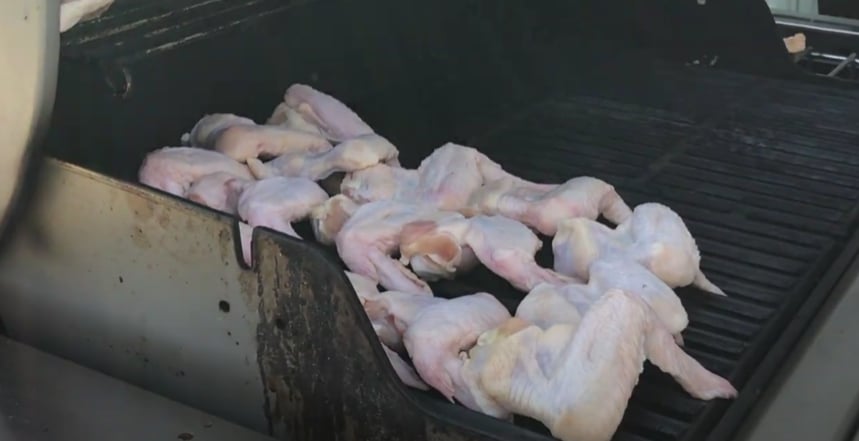
Smoking chicken wings may sound a bit intimidating, but once you get the hang of it, it’s a breeze. The beauty of smoking is that it’s low and slow—perfect for infusing those wings with rich, deep flavor without having to stand over the grill the entire time. I promise, this part isn’t as complicated as it sounds. Here’s how to do it:
Preparation
-
- Pat your wings dry: Start by patting the wings with paper towels to remove any moisture. This helps the wings absorb smoke better and ensures a crispier skin later on. No one wants soggy wings!
-
- Season generously: Toss your wings in olive oil, making sure they’re lightly coated. The oil helps the seasoning stick and also contributes to crispy skin. Next, sprinkle them with salt, pepper, and garlic powder. Feel free to adjust the seasonings based on your taste—don’t be afraid to add a little paprika or cayenne if you like extra heat!
-
- Prep your smoker: Set your smoker (or grill, if you’re using one as a smoker) to a steady 225°F. This is the ideal temperature for cooking wings evenly without drying them out. If you’re using a charcoal or gas grill, create a two-zone cooking setup: keep one side for direct heat and the other for indirect heat (where the wings will sit).
-
- Wood chips: For smoked wings, the type of wood you use makes a big difference. Applewood adds a light, fruity sweetness that pairs beautifully with chicken, while hickory gives a stronger, more robust smoky flavor. I recommend soaking your wood chips for about 30 minutes before adding them to the smoker or grill. This prevents them from burning too quickly and helps release a consistent smoke.
Smoking Method
-
- Load up the smoker: Once your smoker has reached 225°F, it’s time to add the wings. Arrange them in a single layer on the smoker’s grate, making sure they have some space between them. This allows the smoke to circulate around each wing for even cooking.
-
- Add wood chips to the smoker: Place your soaked wood chips directly onto the coals (for a charcoal smoker) or into the smoker box (for a gas grill or electric smoker). Close the lid quickly to trap all that flavorful smoke.
-
- How much smoke? You want to see a thin, steady stream of smoke. Thick, billowing smoke can make the wings taste bitter. A good rule of thumb is to add more chips every 30-45 minutes if you notice the smoke is thinning out.
-
- Add wood chips to the smoker: Place your soaked wood chips directly onto the coals (for a charcoal smoker) or into the smoker box (for a gas grill or electric smoker). Close the lid quickly to trap all that flavorful smoke.
-
- Monitor the temperature: Keeping your smoker at a consistent 225°F is key to ensuring your wings cook through evenly. Too high, and they’ll dry out; too low, and they might not cook all the way through. Use a good thermometer to keep an eye on the internal temp.
-
- Smoke your wings for 1.5 to 2 hours: Now comes the easy part—just let them cook. The wings are done when their internal temperature reaches 165°F. Use a meat thermometer to check, especially in the thickest part of the wings. Flip the wings halfway through cooking to ensure both sides get that smoky flavor. If you like a little more smoke flavor, you can let them stay on the smoker for closer to 2 hours.
-
- Pro Tip: Make sure to keep the smoker lid closed as much as possible during cooking. Every time you open it, you let out heat and smoke, which can slow down the cooking process.
The Crisping Secret
Smoked wings are full of flavor, but sometimes they don’t get as crispy as fried wings. Don’t worry—I’ve got a little trick for you:
-
- For crispy skin: After smoking, crank up your grill’s heat or place the wings under the broiler for 2-3 minutes. This quick blast of high heat crisps up the skin without overcooking the wings. Just be sure to keep a close eye on them to avoid burning!
-
- Direct grilling method: If you’re already grilling, you can transfer your smoked wings to the direct heat side of the grill for a couple of minutes, turning occasionally to crisp the skin to perfection.
Rest the wings: After removing the wings from the smoker (or grill), let them rest for about 5 minutes before tossing them in buffalo sauce. Resting allows the juices to settle in the meat, making them more tender and juicy.
Buffalo Sauce: The Perfect Finishing Touch
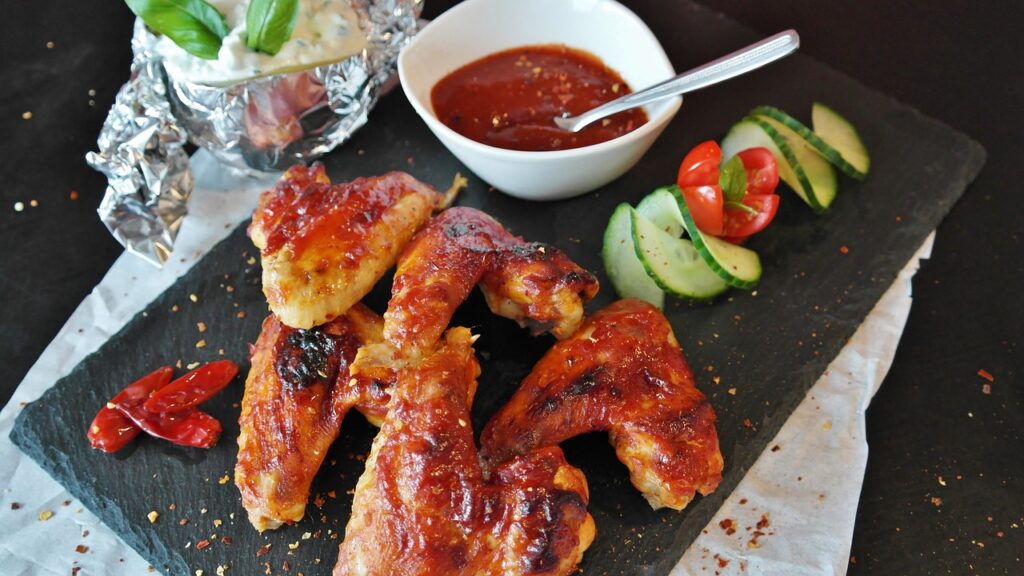
Now that your wings are smoky and cooked to perfection, it’s time to sauce them up! You can always grab a bottle from the store, but if you want to make your own buffalo sauce (which I highly recommend), it’s super easy:
-
- 1/2 cup hot sauce (Frank’s Red Hot is a classic)
-
- 1/4 cup melted butter
-
- 1 tablespoon vinegar
-
- A pinch of garlic powder (for extra flavor)
All you need to do is whisk these ingredients together until they’re fully combined, and you’ve got yourself the perfect Buffalo sauce. It’s spicy, tangy, and buttery—all the things that make Buffalo wings so irresistible. Toss your freshly cooked wings in the sauce just before serving to keep them crispy on the outside while soaking up all that delicious flavor.
This sauce isn’t just for wings either! You can drizzle it on fries, mix it into sandwiches, or even use it as a dip for veggies. So next time you’re serving up a batch of wings, give this homemade Buffalo sauce a try.
What not to do when cooking buffalo wings
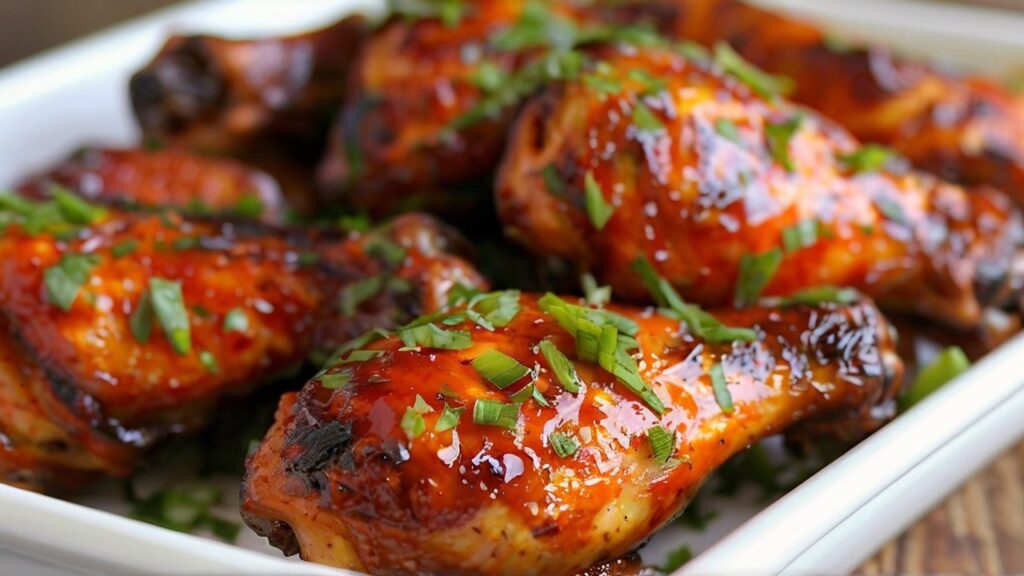
Cooking Buffalo wings seems easy, right? But even the simplest dishes have their little secrets, and wings are no different! To make sure your Buffalo wings turn out crispy, juicy, and perfectly sauced every time, here’s a friendly heads-up on what not to do:
Don’t forget to dry the wings: This is a big one! If your wings are too wet, they won’t get that nice crispy skin. Before you start cooking, grab some paper towels and pat them dry. It might seem like a small step, but it makes a huge difference!
Don’t crowd the pan: Whether you’re baking or frying, give your wings some room to breathe! If they’re all squished together, they’ll steam instead of crisp up. So spread them out in a single layer and let the heat do its thing.
Don’t sauce them too early: This is a classic mistake. If you toss your wings in Buffalo sauce while they’re still cooking, they’ll lose that crispy texture. Wait until they’re done, nice and crispy, and then toss them in the sauce right before you serve. Trust me, it’s worth the wait!
Don’t forget to balance the flavors: Buffalo sauce is all about balance. You want it spicy, tangy, and buttery, but not too much of any one thing. If your sauce is too spicy or too rich, it can overpower the wings. Give it a quick taste before you toss the wings, and adjust the butter or vinegar if needed to get that perfect balance.
Don’t overcook or undercook the wings: Timing is everything! You want your wings to be fully cooked (165°F is the magic number), but still juicy. Undercooked wings are a no-go, and overcooked ones can get dry. Keep an eye on them, and pull them out when they’re golden and cooked just right.
Don’t forget to season the wings before cooking: Even though the Buffalo sauce brings a lot of flavor, don’t skip seasoning the wings first! A little salt, pepper, and some garlic powder boost the flavor. It’s a small step, but it makes the wings taste even better.
Don’t use the wrong cooking method for your taste: How you cook the wings matters! If you want them extra crispy, go for frying. If you want a healthy snack and like it crispy, baking is a good choice. A wire rack helps air flow, so your food gets crispy. Make sure you know what you want to eat before you start.
What Goes Well with Buffalo Wings?
You’ve got the wings, but what about the sides? Keep it simple with some classic pairings:
Crisp Veggies: You’ve probably seen this one before—Buffalo wings and veggies go hand in hand. Crunchy celery and carrot sticks are the classic pairing because they provide a cool, refreshing break between bites of spicy wings. Plus, they’re great for dipping into ranch or blue cheese!
Creamy Dips: Speaking of dips, no Buffalo wing spread is complete without a creamy dip to balance out the heat. Blue cheese is the traditional choice, but ranch dressing is just as popular. The creamy texture and tangy flavor help cool things down and add another layer of flavor to each bite.
Fries: Who doesn’t love a side of crispy French fries with their wings? Whether you go for regular fries, sweet potato fries, or even curly fries, they’re the perfect salty, crunchy side to pair with those saucy wings. If you’re feeling adventurous, you can even drizzle some Buffalo sauce on your fries!
Coleslaw: Coleslaw brings a nice contrast to the heat of Buffalo wings. The creamy, slightly sweet, and tangy flavors of the slaw help cut through the spice and refresh your palate. Plus, the crunch from the cabbage is a great texture match with the wings.
Mac and Cheese: If you want to turn your meal into the ultimate comfort food, pairing Buffalo wings with a bowl of mac and cheese is the way to go. The creamy, cheesy goodness of mac and cheese goes perfectly with the bold, spicy flavors of Buffalo wings. It’s rich, filling, and delicious.
Potato Wedges: If fries aren’t your thing, give potato wedges a try. They’re thicker, crispier, and a bit heartier than regular fries, and they soak up all the delicious wing sauce that might drip off. You can even season them with a little garlic and parmesan for extra flavor.
Salad: A light salad on the side can be a refreshing option. A simple green salad with a tangy vinaigrette or a Caesar salad works great because the acidity and freshness complement the spiciness of the wings.
Cornbread: For something a little different, try serving cornbread with your Buffalo wings. The slightly sweet, buttery taste of cornbread pairs nicely with the spicy wings, and it adds a soft, comforting element to your plate.
Drinks: You’ll want a refreshing drink to wash down those spicy wings. An ice-cold beer is a classic pairing, but if beer’s not your thing, a sparkling lemonade or even a cold soda does the trick. The fizz and sweetness balance out the heat perfectly.
Once your wings are smoked, sauced, and crispy, pile them onto a big platter and let the fun begin! Whether it’s for a party, a family dinner, or just a quiet weekend, these wings are guaranteed to disappear fast.
Chicken Wing FAQs
Are Buffalo Chicken wings hot or spicy?
What’s the best wood for smoking wings?
What temperature should I smoke wings at?
Can I grill wings instead of smoking them?
What sauces taste great with smoked buffalo wings?
If this dish made your day, try out my other American food recipes! Or, If you’re in the mood for something unique, check out my buffalo fish recipe. Keep in touch for more easy tricks and tasty dishes to keep your kitchen lively.
